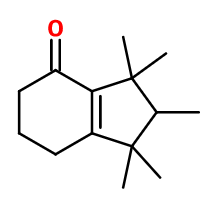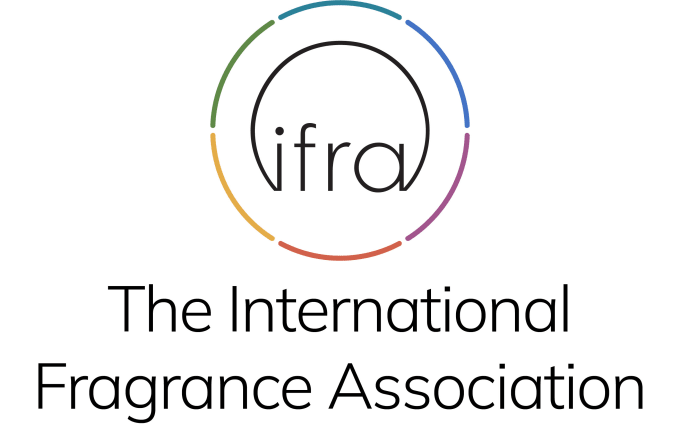
Photo credits: ScenTree SAS
Cashmeran®
1,1,2,3,3-pentamethyl-2,5,6,7-tetrahydroinden-4-one ; Astromeran ; Cas musc ; Cashmeran velvet ; 6,7- dihydro-1,1,2,3,3-pentamethyl-4(5H)-indanone ; Dihydropentamethyl indanone ; 1,2,3,5,6,7- hexahydro-1,1,2,3,3-pentamethyl-4H-inden-4-one ; Indomuscone ; Ianmeran ; Musk indanone

Photo credits: ScenTree SAS
| Company | Ingredient Name | ID | Comments | Naturality | Certifications | Purity | Latin name | Treated part | Geographical origin | MOQ |
|---|---|---|---|---|---|---|---|---|---|---|
|
|
Cashmeran - 30 Gr | - |
Visit website
|
- | - | - | - | - | - |
General Presentation
-
CAS N° : 33704-61-9
-
EINECS number : 251-649-3
-
FEMA number : Donnée indisponible.
-
FLAVIS number : Donnée indisponible.
-
JECFA number : Donnée indisponible.
-
Appearance : Colorless liquid that crystallizes at room temperature
-
Density : 0,96
-
Volatility : Heart/Base
-
Price Range : €€€
Physico-chemical properties
-
Molecular formula : C14H22O
-
Molecular Weight : 206,32 g/mol
-
Log P : 4,5
-
Fusion Point : 27°C
-
Boiling Point : 285°C
-
Detection Threshold : 1,2 ng/l air
-
Optical rotation : Donnée indisponible
-
Vapor pressure : Donnée indisponible
-
Refractive Index @20°C : Donnée indisponible
-
Acid Value : Donnée indisponible.
-
Flash Point : 94°C
Uses
Uses in perfumery :
Cashmeran® is used in woody, spicy, coniferous and ambery notes. Often associated with Kephalis®, and more generally with woody-ambergris and tobacco notes.
Year of discovery :
Cashmeran® was discovered by scientist John Hall in 1969. At the time, he was working on low cost transformations starting with molecule structures such as pentamethylindane and tetramethylnaphthalène. Patent n°3,773,836 (US) published on Aug.18, 1969 by Hall.J for IFF
Natural availability :
Cashmeran® is not available in its natural state.
Isomerism :
Cashmeran® has an asymmetric carbon. It is nevertheless the racemic mixture of this molecule that is used in perfumery. Alpha-Irone and Isoraldeine® are constitutional isomers of Cashmeran®. However, they have a violet and orris smell, different from Cashmeran®.
Synthesis precursor :
Cashmeran® is not a precursor to the synthesis of another compound of olfactory interest.
Synthesis route :
One of the methods for synthesizing Cashmeran® is to oxidize pentamethyl tetrahydroindene in the presence of a cobalt naphthenate catalyst.
Regulations & IFRA
Allergens :
This ingredient does not contain any allergen.
IFRA 51th :
This ingredient is restricted by the 51th amendment
- Quantitative limit on the use :
-
Cat.1 Cat.2 Cat.3 Cat.4 Cat.5A B C DCat.6 0,0063 % 0,26 % 0,019 % 3,8 % 0,31 % 0,025 % 0,038 % 0,0084 %0,0063 % Cat.5A B C DCat.6 0,31 % 0,025 % 0,038 % 0,0084 %0,0063 % Cat.7A BCat.8 Cat.9 Cat.10A BCat.11A BCat.12 0,031 % 0,031 %0,0084 % 0,13 % 0,13 % 0,28 %0,0084 % 0,0084 %9,4 % Cat.10A BCat.11A BCat.12 0,13 % 0,28 %0,0084 % 0,0084 %9,4 %



